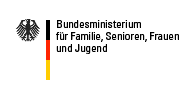Agriculture
Agriculture
Agricultural policy has received new and far-reaching impulses for change in recent years, which have been created not least by crises such as BSE, Nitrofen and swine fever. Reforms in the agrarian sector are supposed to be orienting agriculture more strongly towards the interests of consumers, environmental protection, animal protection and multi-functionalism of rural spaces. Measures can be planned more precisely if gender-related differences are taken into account. This is taken care of by Gender Mainstreaming.
Agriculture today must be seen in the international context of the European Union and the WTO, as these frameworks play a part in defining financial subsidy and legal bases for agriculture. A redistribution of funds from agricultural production to rural development is being considered at all levels. This seems gender neutral, but it isn’t. The area of agriculture and forestry is traditionally male connoted and the role of women in agricultural production is often under-estimated. But precisely gender relations play a great part in the economic, social and cultural structure of rural areas. Responsibility for the individual areas of work are frequently assigned to men or women, which in many places or seasonally results in a much heavier burden of work for women, as they are also forced to do unpaid housework as well as their work in agricultural production. At the same time, this higher burden of work is accorded a negligible share in the jointly-earned income.
Tourism, ecological farming, local services and cultural events, to give just a few examples of the reorientation of agriculture, are supposed to be reviving the employment market in rural areas. The development of these sectors will bring changes in the gender relations, as women and men in their diversity are embedded in different life contexts on account of gender-specific division of labour.
There are a few gender aspects that are often important in agricultural policy.
Agriculture today must be seen in the international context of the European Union and the WTO, as these frameworks play a part in defining financial subsidy and legal bases for agriculture. A redistribution of funds from agricultural production to rural development is being considered at all levels. This seems gender neutral, but it isn’t. The area of agriculture and forestry is traditionally male connoted and the role of women in agricultural production is often under-estimated. But precisely gender relations play a great part in the economic, social and cultural structure of rural areas. Responsibility for the individual areas of work are frequently assigned to men or women, which in many places or seasonally results in a much heavier burden of work for women, as they are also forced to do unpaid housework as well as their work in agricultural production. At the same time, this higher burden of work is accorded a negligible share in the jointly-earned income.
Tourism, ecological farming, local services and cultural events, to give just a few examples of the reorientation of agriculture, are supposed to be reviving the employment market in rural areas. The development of these sectors will bring changes in the gender relations, as women and men in their diversity are embedded in different life contexts on account of gender-specific division of labour.
There are a few gender aspects that are often important in agricultural policy.
erstellt von Administrator
—
zuletzt verändert:
02.01.2010 20:08





